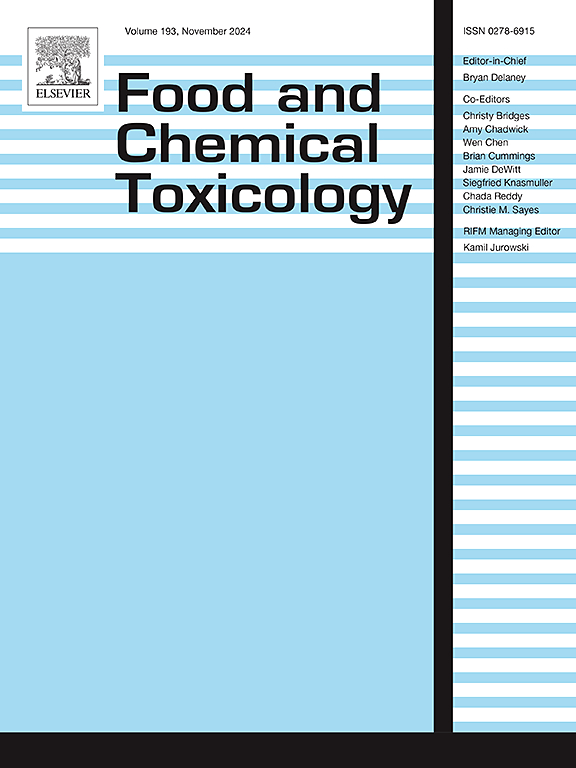Derivation of a health-based guidance value for bisphenol A via the weight of evidence approach
IF 3.9
3区 医学
Q2 FOOD SCIENCE & TECHNOLOGY
引用次数: 0
Abstract
There remains a debate over the health-based guidance value of bisphenol A (BPA) worldwide. Through the weight of evidence approach, this study systematically searched and evaluated the updated BPA toxicological data following the guidelines for evaluating the relevance and reliability of toxicological data developed by the China National Center for Food Safety Risk Assessment. Benchmark dose and no observed adverse effect dose/lowest observed adverse effect level methods were used for dose–relationship analysis. A total of 334 articles were used for evidence integration and included in this hazard assessment of BPA. General toxicity, toxicity to the reproductive system, and neurological (developmental) toxicity were included as possible critical effects in the present assessment. With a point of departure of 2310 μg/kg body weight (BW) based on the decreased round spermatid count in rat seminiferous tubules and the human equivalent dose factor of 0.185 using the constructed physiologically based toxicokinetic model of oral intake of BPA in Chinese population, a human equivalent dose of 427 μg/kg BW was obtained. Applying an overall uncertainty factor of 100, the present assessment established a temporary-tolerable daily intake of 4 μg/kg BW for oral exposure of humans to BPA.
求助全文
约1分钟内获得全文
求助全文
来源期刊

Food and Chemical Toxicology
工程技术-毒理学
CiteScore
10.90
自引率
4.70%
发文量
651
审稿时长
31 days
期刊介绍:
Food and Chemical Toxicology (FCT), an internationally renowned journal, that publishes original research articles and reviews on toxic effects, in animals and humans, of natural or synthetic chemicals occurring in the human environment with particular emphasis on food, drugs, and chemicals, including agricultural and industrial safety, and consumer product safety. Areas such as safety evaluation of novel foods and ingredients, biotechnologically-derived products, and nanomaterials are included in the scope of the journal. FCT also encourages submission of papers on inter-relationships between nutrition and toxicology and on in vitro techniques, particularly those fostering the 3 Rs.
The principal aim of the journal is to publish high impact, scholarly work and to serve as a multidisciplinary forum for research in toxicology. Papers submitted will be judged on the basis of scientific originality and contribution to the field, quality and subject matter. Studies should address at least one of the following:
-Adverse physiological/biochemical, or pathological changes induced by specific defined substances
-New techniques for assessing potential toxicity, including molecular biology
-Mechanisms underlying toxic phenomena
-Toxicological examinations of specific chemicals or consumer products, both those showing adverse effects and those demonstrating safety, that meet current standards of scientific acceptability.
Authors must clearly and briefly identify what novel toxic effect (s) or toxic mechanism (s) of the chemical are being reported and what their significance is in the abstract. Furthermore, sufficient doses should be included in order to provide information on NOAEL/LOAEL values.
 求助内容:
求助内容: 应助结果提醒方式:
应助结果提醒方式:


